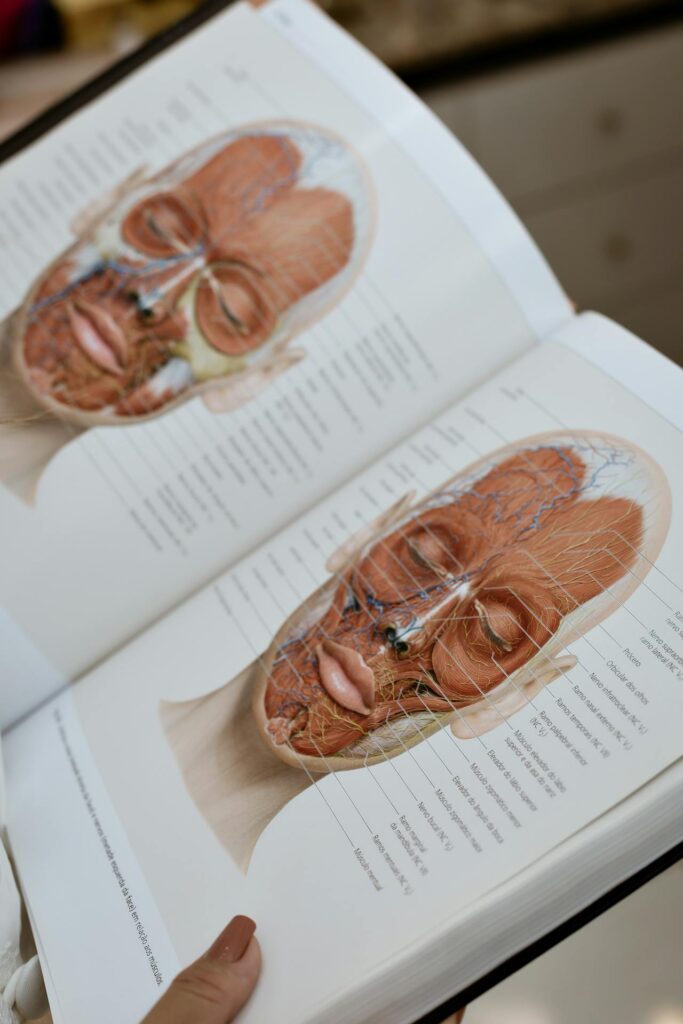In herbalism, it’s important to understand how the nervous system works. Knowing the basics of the nervous system can help herbalists know what is happening in the body. Understanding how the body works will make is easier to recognize the herbs to recommend to alleviate the ailment. Knowing the nervous system helps us understand what constitutional imbalance may present.
Nervous System: The Three Main Parts
There are three main parts to the nervous system. There is the CNS (central nervous system), the PNS (peripheral nervous system), and the ANS (autonomic nervous system). The CNS consists of the brain and spinal cord. The PNS is a network of nerves that reach out to organs and tissues in the body. And the ANS is the involuntary nervous system that gives directions in the form of motor nerve signals. These signals go to the viscera which is the internal organ walls, digestive tract, the heart muscle, and exocrine glands.

Central Nervous System(CNS): Important Points to Remember
The CNS communicates with the peripheral nervous system and vice versa. Together, they have a back and forth communication line. It is made of the brain and the spine.
Brain
The brain is a large part of the central nervous system. The four areas of the brain that allow important function in the body are: the frontal lobe; the parietal lobe, the temporal lobe, and the occipital lobe.
The Frontal Lobe
The frontal lobe is behind the forehead. Muscle movement, speaking, and deep thinking take place in the frontal lobe. A large part of our personality is found in the frontal lobe, too.
The Parietal Lobe
This is where your body senses what is happening to you and around you. Is the blanket soft or rough? The temperature hot or cold? Is a person’s handshake firm with a lot of pressure, or light with minimal pressure? The parietal lobe perceives pain. Does the blanket hurt your skin? Did the tea burn your tongue?
The Temporal Lobe
The temporal lobe is beneath the temples. This is the part of the brain that receives and interprets sounds. It recognizes different tones. The temporal lobe also perceives how loud or soft a sound is.
The Occipital Lobe
This area of the brain receives and interprets what your eyes see.
Spine
The spinal cord holds a lot of information for the body. Think of the spinal cord like a relay center. Messages pass from the brain to the body and the body to the brain through the spinal cord.
Peripheral Nervous System(PNS): Important Points To Remember
The PNS is the system that connects the spine and brain to the rest of the body. These connections are long pathways of nerves that run throughout the body. Twelve nerves in the brain come from the brainstem and twelve nerves reach out from the spinal cord.
Somatic Motor System and Autonomic Nervous System
There are two parts to the PNS: the somatic motor system and the autonomic nervous system. The somatic motor system has nerve cells that control the muscles. It is a voluntary system, meaning you make it happen on your own. However, the autonomic system is involuntary, which means your body simply does what it was meant to do. Whenever you hear autonomic nervous system, think automatic. The autonomic system controls the heart muscles, gastrointestinal tract, airways, urinary tract system, reproductive system, eyes, and the skin.

Sympathetic and Parasympathetic
The ANS (autonomic nervous system) has two parts: sympathetic and parasympathetic states. Our bodies are constantly moving back and forth between the sympathetic and parasympathetic state.
The sympathetic state takes over in situations with high stress. It’s responsible for our fight-or-flight mode. But the parasympathetic state takes over in situations with low stress. Think of it as the rest-and-digest mode.
Both of these states are important for the body. An imbalance occurs when one state is stuck and the body cannot shift between the them.
Enteric Nervous System
The enteric nervous system fits into a category all by itself. This system has a bunch of nerves inside the lining of the gastrointestinal tract and goes all the way from the esophagus down to the anus. This is the system that tells you to vomit or run to the toilet. The ENS involves tummy regulation, how your body breaks down digestive enzymes. It also plays a part in regulating hormones.
The ENS talks to the CNS and vice versa. Technically, the ENS is a part of the autonomic nervous system. Another crazy cool fact to remember is that moods and emotions begin in the ENS. The phrase, “I feel it in my gut,” is actually very accurate. Our feelings arise first in our stomachs or guts. Cool, right?
Conclusion
The nervous system, in all its tiny intricacies, points to an incredible Creator who cares about the little things. The more I study the human body, the more I’m in awe at who God is. He is real. Just look as what he’s made! Having a basic knowledge of the nervous system also helps herbalists to know what is happening in the body and what herbs will bring the body back into balance. In the next blog post, I’m going to be sharing how stress changes our body and influences our nervous system and what we can do about it.





